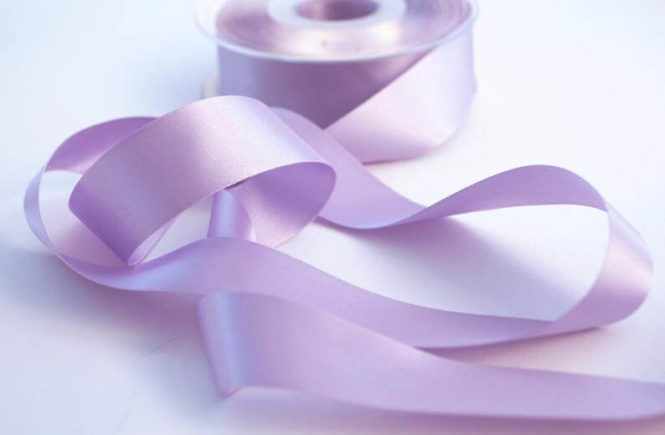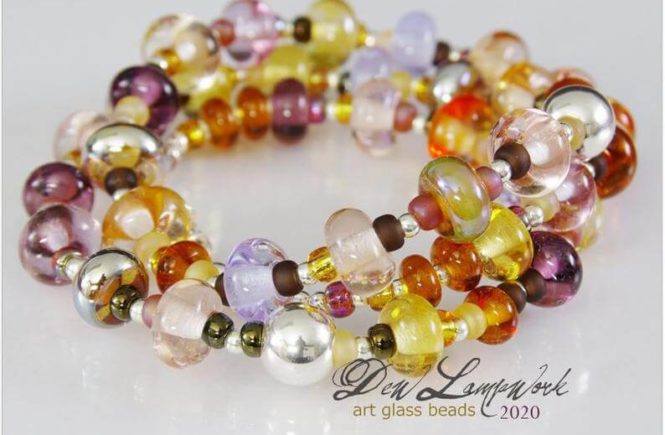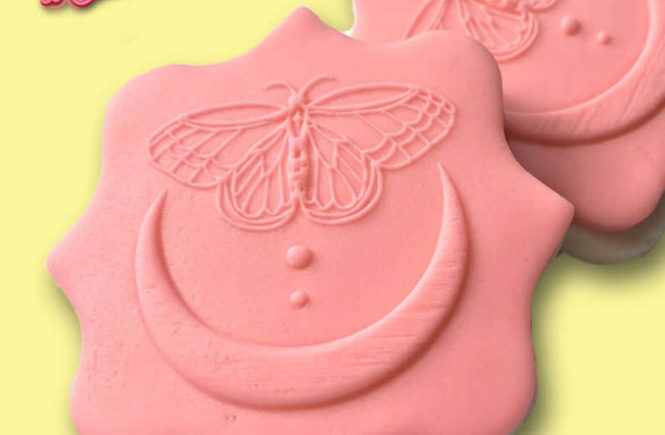[vc_row][vc_column][vc_message]Niche : Personalized Design
Shop link : https://www.etsy.com/uk/shop/happywrap
Instagram : https://www.instagram.com/happywrapped
Facebook : https://www.facebook.com/happywrap
Twitter : https://twitter.com/happywraps
Website : https://www.happywrap.co.uk[/vc_message][/vc_column][/vc_row][vc_row][vc_column][vc_column_text]
Tell us something about yourself, how did you get started, do you consider yourself a crafter, maker, artist…
I’ve always been called a daydreamer, but I think most daydreamers know that what you’re really doing is coming up with ideas whilst your mind is buzzing with energy. I love messing with materials, getting absorbed in creativity, and discovering something. This led to me completing a BA Hons degree in Fine Art, which I thoroughly enjoyed. Although my focus was painting, the fabric has always been present in my upbringing as my grandparents were both keen sewers and always had the beautiful fabric in their house. This combined with my passion for making things better for people and the planet led to the idea of reusable gift wrapping made with textiles. After I finished my degree it made sense to try and turn this idea into a way of earning and Happywrap was born. I would say I consider myself an artist at heart, but a designer-maker in practice.
How did you discover Etsy? Did you have any previous experience in selling handmade products? Why did you start selling online?
My business would never have started if it wasn’t for being able to sell online. It’s an absolute must for an introvert like me, and also allows you to start without too many upfront costs. I joined an online craft forum which was brilliant for not just creative advice, but also business advice. From there I discovered several online selling sites. I first started selling on a UK based site and decided to keep to just the one as I thought I would be inundated with sales! How naïve I was. Thankfully I realized I needed to cast the net wide in order to reach more customers, so I set up on Etsy in 2012.
What products do you sell, what type of materials are used in your creations, how do you design your products, what makes your products stand out?
I sell eco-friendly gift wrapping including reusable wraps made from organic cotton and recycled wrapping paper printed with vegetable-based inks. All materials and packaging are plastic-free and either reusable or recyclable, and biodegradable at the end of their useful life. When I first started, my products were very colorful, bright, and busy, using a variety of fabrics and ribbons. But gradually I realized I needed to simplify it, reduce the visual noise, and give a more calm, earthy, natural feel. All my designs are inspired by nature, whether it’s the sunset colors in the sky or the reindeer and snowflakes for the festive season. I start with a theme, for example, I am currently working on an ocean theme. I choose elements I’d like to include such as turtles, shells, and starfish, then use photos and sketches to add those elements into a design. I either draw them straight onto the computer or hand-drawn and scan them, so that I can create the design in Photoshop. That way I can keep moving, scaling, and adjusting the elements until they work visually. Sometimes it helps to print it out, stick it on the wall and stand back from it, coming back to it over days or even weeks. You’ll know when a design works if you don’t see it for a while, then see it unexpectantly on your wall and think ‘wow, I like that’. Or if it doesn’t work you’ll see what isn’t right about it. Once I’m happy with it, I need to make sure the file is right for a repeat design so that I can send it to both the fabric and paper printers. Once the huge rolls of fabric arrive, they need to be cut up and sewn into the reusable wraps, adding the cords and tag into the hem.
[/vc_column_text][/vc_column][/vc_row][vc_row][vc_column width=”1/3″][vc_single_image image=”100002119″ img_size=”737×737″ onclick=”link_image” css_animation=”appear” bb_tab_container=””][/vc_column][vc_column width=”1/3″][vc_single_image image=”100002118″ img_size=”737×737″ onclick=”link_image” css_animation=”appear” bb_tab_container=””][/vc_column][vc_column width=”1/3″][vc_single_image image=”100002117″ img_size=”737×737″ onclick=”link_image” css_animation=”appear” bb_tab_container=””][/vc_column][/vc_row][vc_row][vc_column][vc_column_text]
How was your experience in learning to craft, are you self-taught or did you have a mentor, how long did it take for you to be satisfied with your creations?
I learned to sew when I was a child and picked up tips from my mum and grandma. That was enough to get me started, then when I wanted to improve something, for example, sewing mitered corners, I learned from the internet. The cotton wraps have changed several times since I started as I’ve found better ways to attach ribbons or cords, used different fabrics, and most recently changed the shape so that they create a neater finish when used to wrap a gift. So it’s been a few years. I remember being very nervous when I first put my products up for sale, feeling like they weren’t good enough. But if you wait for them to be perfect you’ll never get started and the feedback you get from customers is incredibly important as they’ll see things differently to you. Criticism is a chance to improve something and compliments will boost your confidence.
What was your original goal when you opened up an Etsy shop? What impacted your decision to start selling online? Do you consider online selling as a side-job, full-time job, or extra income to pay for your hobby?
During my studies, I learned that there are thousands of artists trying to earn a living from their work and that in order to sustain yourself you need to find other income streams. I did sell some paintings in local exhibitions but mainly started setting up my Happywrap gift wrapping business as it was an opportunity to create a side income whilst still being creative and running my own venture. It took a few years before I was able to pay myself a regular wage from it as there are so many costs to take out first. Thankfully my other half has supported me and given me the chance to make it profitable. Now I am also a Mum and although it’s been a juggling act, I really value being in control of my own workload and being able to outsource some of the work.
Did you have any fears or reservations before opening up your Etsy shop? Were you worried about profitability or product competitiveness? What are some concerns and questions you had before you got started? How did you overcome them?
Absolutely! My first thought was, what if nobody buys anything? I was worried about how disappointed I would feel if I didn’t get any sales or interest. Why will anyone buy from me? Will it be good enough? etc. I was also worried about how to get the right image for the brand as the eco-conscious customer was still fairly new back then and although it is a niche, I didn’t want it to be too niche so as not to get enough interest. My approach for overcoming fears and reservations is to think through what the worst outcome could be, what is really at stake? If you can handle the worst-case scenario, then there’s no reason to not get stuck in and go for it.
How long did it take for you to get your first sale? Did you ever think you would make a lot of sales in the first year? What was the goal you were hoping for? How many sales an average you get per week?
I opened my Etsy shop in January 2012 and had my first sale 4 months later in May. I expected a slow start as I knew I had a lot of work to do and improvements to make. Gradually the sales started trickling in and during the festive season, I was getting regular sales. I didn’t really set any goals as I was really just learning at this point and testing out ideas. Now, my minimum target is 100 orders a week, aiming for 200 per week in the festive season, excluding trade orders.
Do you have a job outside Etsy? If not, are you able to commit full-time to online selling? How does your typical day look like? How do you manage time?
Although it can be tricky to manage, I love the fact that I can work my business around my family, allowing me to be a full-time mum. At first, things got really stressful when I was up late sewing orders, then nursing baby back to sleep at least twice in the night and working when he was napping instead of catching up on sleep myself. I was exhausted and needed a more realistic workload. So I got myself organized by taking on a team member to do some of the sewing, which has now grown to 3 team members, who also work flexibly around their personal lives. Building a team and knowing when and how to outsource some of the work is really key if you want to be able to spend precious time with your family. The first thing of the day is to spend time engaging and playing with my son, then once he is settled I start by checking emails for orders and inquiries. I get orders ready for dispatch in the morning and as soon as the cut-off has passed for same-day dispatch, I put them out ready for collection. That way the time pressure is off and I can focus on replying to inquiries, ordering supplies, accounts, new designs, developing the business, and making plans.
How does your manufacturing process look like for e.g. your best selling product? Do you create products ahead of the orders? Do you customize your products, if so how? What are the tools that you are using in the manufacturing process?
I remember in the early days making wraps to order, which worked fine until I really honed in on the eco-friendly aspect of the products by ditching the plastic and only using cotton and it really took off. So now they are made in advance. I prepare all the materials by using a template to cut out the fabric pieces, corner pieces, and cord, then deliver them to the team to be sewn into wraps. When they arrive back I fold them, add the card wrap and tags so they are ready to go. Last year I also got a fabric cutter involved so that the rolls of fabric can go straight from the printers to the cutters, where they are able to layer up the fabric on a large cutting table and use a machine to cut hundreds of pieces out very quickly. Much easier than me rolling out the fabric on the floor and using a pair of scissors! Being able to reduce my time on the making, allows me to focus on the designs.
What is the biggest impact on the profitability of your shop? How expensive are the materials you use? How do you price your products?
Sticking to ethics comes at a higher price. I use organic cotton so that I know there are fairer employment standards for the workers who produce it, and find other supplies within the UK such as the fabric printing, printed labels, cotton braid, packaging, tags, and wrapping paper. Buying in bulk is essential to keep costs as low as possible. To price my items I add up the costs to produce it (materials, labor, fees, commission, postage, and packaging), add on a percentage towards running costs, then add on my mark-up. At this point, I think about whether the price is in line with similar items on the market and decide whether it needs to be higher or lower and whether there is room for the trade price which has to be half the retail price, and still make a profit.
What inspires you when you’re creating? How do you get ideas for new products? What are some methods or tools you use to get creative?
I’m always looking for patterns in nature and how it can be used in surface design on fabrics, paper, wallpaper, etc. There is so much variety out there so it’s easy to get overwhelmed but important to notice things that catch your eye. I keep in mind the ‘mood’ I’m aiming for and collect a kind of mental pinboard of images. Thinking about the current political and economic climate as well as shifting cultural sensibilities helps me think about where trends might be heading. And of course, keeping an eye on the competition, what I like about it and what I don’t like, how I want my designs to be different.
Do you ship your product internationally? How do you handle postage pricing? What is the average time it takes from the order to the delivery? Do you use free shipping? If so, why? How do you package your products?
I do ship internationally and always find it exciting to send to a country I’ve never shipped to before. I offer free shipping within the UK and a flat rate for international customers so that the postage doesn’t stack up for multiple purchases. The flat rate is based on an average of what it costs to send orders internationally and includes the shipping cost, packaging, and commission to Etsy. I regularly review the postage prices to keep it as far as I can without making a loss on postage as unfortunately, it gets quite expensive to ship abroad. Timescales for postage within the UK is pretty quick, usually 1 to 2 days. For international orders, it’s 1 to 2 weeks. Customs checks can slow things up but thankfully this doesn’t happen very often. For packaging, I bulk buy several different sized boxes, cardboard tubes, and eco-tape so that it’s easy to grab what I need for an order. I used to try and reuse boxes but it gets too slow when you’re having to peel off old labels and tape, and they can also look a bit shabby. The packaging I use is all plastic-free and recyclable. I tend to pack things in with a bit of scrunched up paper to stop things slipping about in transit.
Are you worried about competitors? Does it impact your business in any way? If there are a lot of similar products, how do you make your own stand out?
I’m always worried about competition, which is actually a good thing! First of all, it means there is a market for my product and I’m not the only one who thinks it’s a good idea. The other thing is that looking at what competitors are doing pushes me to do better and look for ways to differentiate my brand. I remember feeling annoyed after seeing some new arrivals on Etsy that were selling wraps like mine using similar fabrics and shiny ribbons, so I decided to go plastic-free and only use natural materials to stand out and keep one step ahead of the competition. It really made sense with the eco-credentials behind the idea and it transformed my business.
How do you deal with disputes or bad ratings/feedback? How do you manage presale and post-sale communication and customer satisfaction?
Thankfully the automatic notifications sent when a customer places an order really help to reduce the workload but keep the customer informed. I make sure I regularly update them so that they give the customer a realistic idea of when their order will be dispatched, adding seasonal variations when needed, e.g. Christmas delivery timescales. I try to reply to customer messages within a day and always keep it professional and treat the customer as I would wish to be treated myself. I try to remind myself that buying online can make customers feel nervous as they don’t know if a seller will treat them fairly if there’s a problem, so this anxiousness can make their message come across as abrupt. A bit of reassurance and professionalism goes a long way and can turn an anxious customer into a repeat buyer. Occasionally there will be a bad rating that nothing would have changed, so I just put it down to experience and move on.
Has selling on Etsy changed your life in any way? If so, how? Did you ever think you would get this far with your shop? Have you ever been stressed about dealing with customers and manufacturing products? How did you deal with that?
Etsy certainly helped to open up my online selling adventure by helping to get my products and ideas noticed. I always hoped my shop and business would grow but still get excited when I reach the next milestone and there is so much more to achieve. I tend to feel stressed when dealing with something new, so for example when I first had an item go missing in the post, or when I first started approaching manufacturers or wholesalers as I felt like a fish out of water! I try to keep a cool head and just think about what a senior, confident business person would do. Once you build up experience the confidence grows and you just get on with things, especially when it’s busy and there’s not too much time to dwell on it!
[/vc_column_text][/vc_column][/vc_row][vc_row][vc_column width=”1/3″][vc_single_image image=”100002116″ img_size=”737×737″ onclick=”link_image” css_animation=”appear” bb_tab_container=””][/vc_column][vc_column width=”1/3″][vc_single_image image=”100002115″ img_size=”737×737″ onclick=”link_image” css_animation=”appear” bb_tab_container=””][/vc_column][vc_column width=”1/3″][vc_single_image image=”100002114″ img_size=”737×737″ onclick=”link_image” css_animation=”appear” bb_tab_container=””][/vc_column][/vc_row][vc_row][vc_column][vc_column_text]
How important is social media for your shop? What are some common tactics you use to promote your products? Do you spend money on ads outside of Etsy? How do you generate excitement/hype around your products?
Social media does not come naturally to me as I’m not a very outgoing person. So I find Instagram really useful as I can connect it up to Facebook, Twitter, and Tumblr and post to all at the same time. I try to capture interesting little moments that give a sense of the processes at Happywrap and what we’re up to. Learning to make the most of hashtags is also great as it’s like leaving a trail for people to find your business. For example, #plasticfreejuly allows people to search for new products and ideas in July that is plastic-free. Also creating videos for your YouTube channel can generate new followers. I decided early on that I wasn’t going to spend on advertising as I wanted the brand to grow organically and also it can become very costly to a small business to get a decent exposure.
What are some things you don’t like about Etsy? If you could talk to the CEO of Etsy what recommendations would you tell him to improve sellers and customer satisfaction?
In recent years there has been a shift in how Etsy enforces changes for sellers, lately a fee for advertising your items, even when Etsy also takes a commission from the sale. Sadly if Etsy becomes too similar to the other large selling platforms, it will become difficult as a seller to justify putting your time and effort into Etsy over the other sites you sell on. In an increasingly overcrowded marketplace, Etsy needs to stay different and stand out by protecting and enhancing the values envisaged by its creators.
What are some things you did to set your shop for success on Etsy? What is one lesson you learned the hard way?
I made a real effort with product photography. I really wanted to show the quality of the materials and how the wraps are used as it was still relatively unknown to many people. When I am browsing for things to buy I am drawn to great images, looking at the photos first and then the description after. I also joined some teams as it’s great to build a supportive network where you can exchange tips and help each other. Looking at other sellers that had been around for longer and had thousands of sales was also really helpful to see what a successful shop looked like. The thing I learned the hard way was not pricing products correctly early on, which meant not making money or setting things on the right course. I priced far too low as I was anxious that no one would buy my items if they were too expensive. The problem with pricing too low is that potential customers may perceive that your items are of low quality, the money is soon swallowed up by costs and there is no room to sell to trade.
What piece of advice would you give to new or established sellers or those considering selling on Etsy? How can they avoid beginner mistakes?
Remember that Rome wasn’t built in a day. It takes time to build a successful business so aim for progress, not perfection, but keep moving forward with it. Joining in with the teams and forums can really help and don’t be afraid to ask questions, there are plenty of experienced people out there willing to help.
[/vc_column_text][/vc_column][/vc_row]




